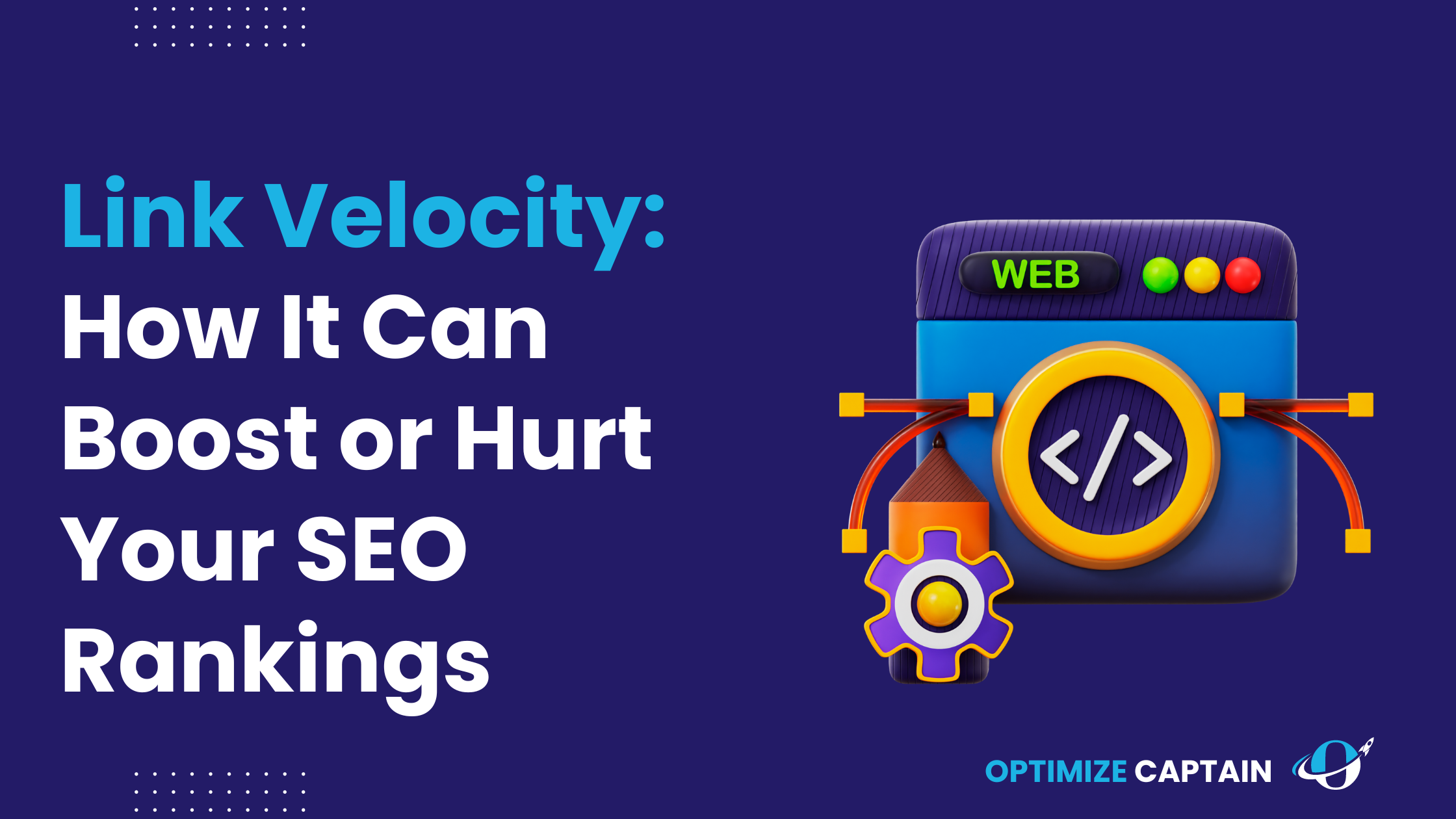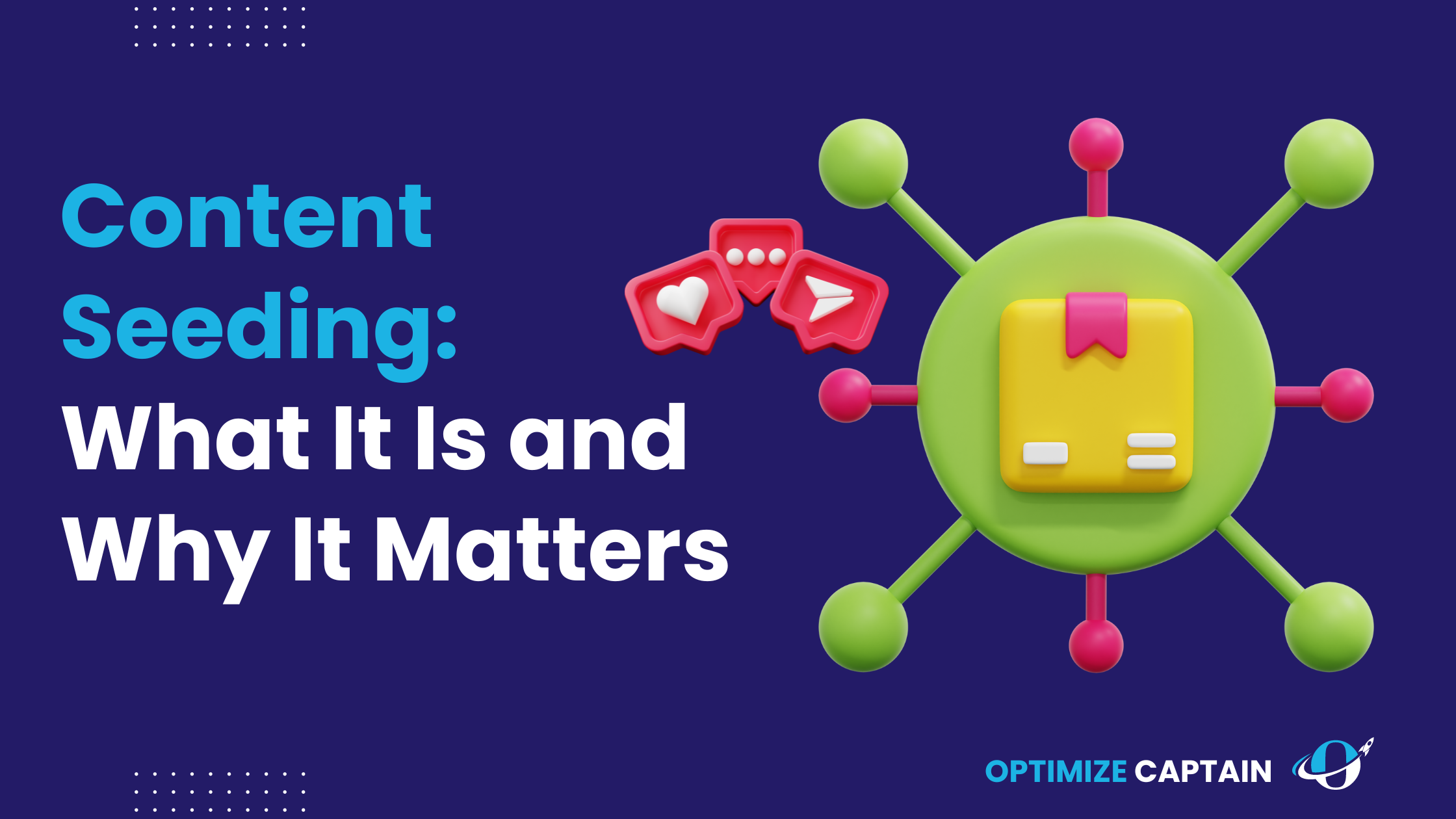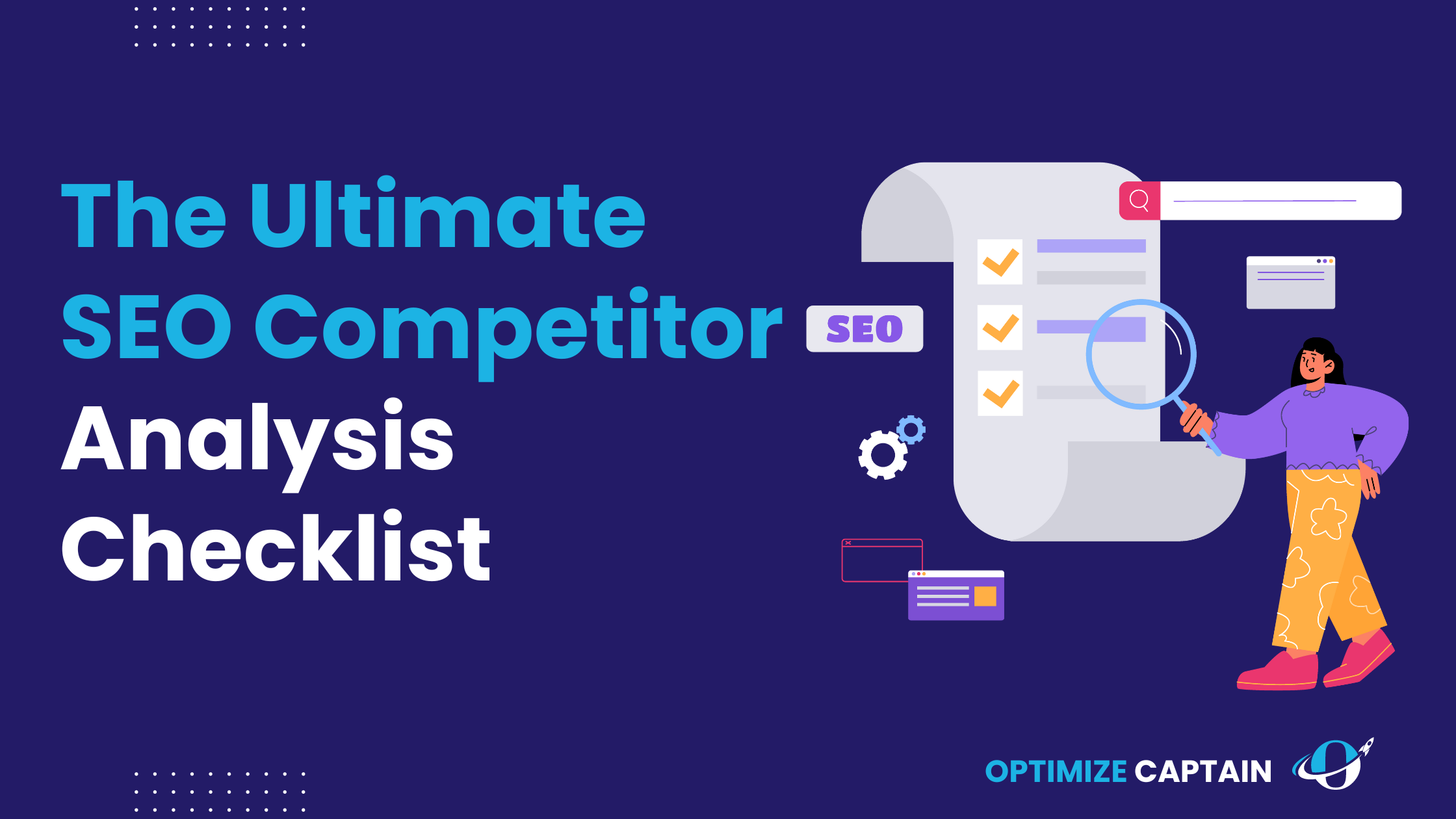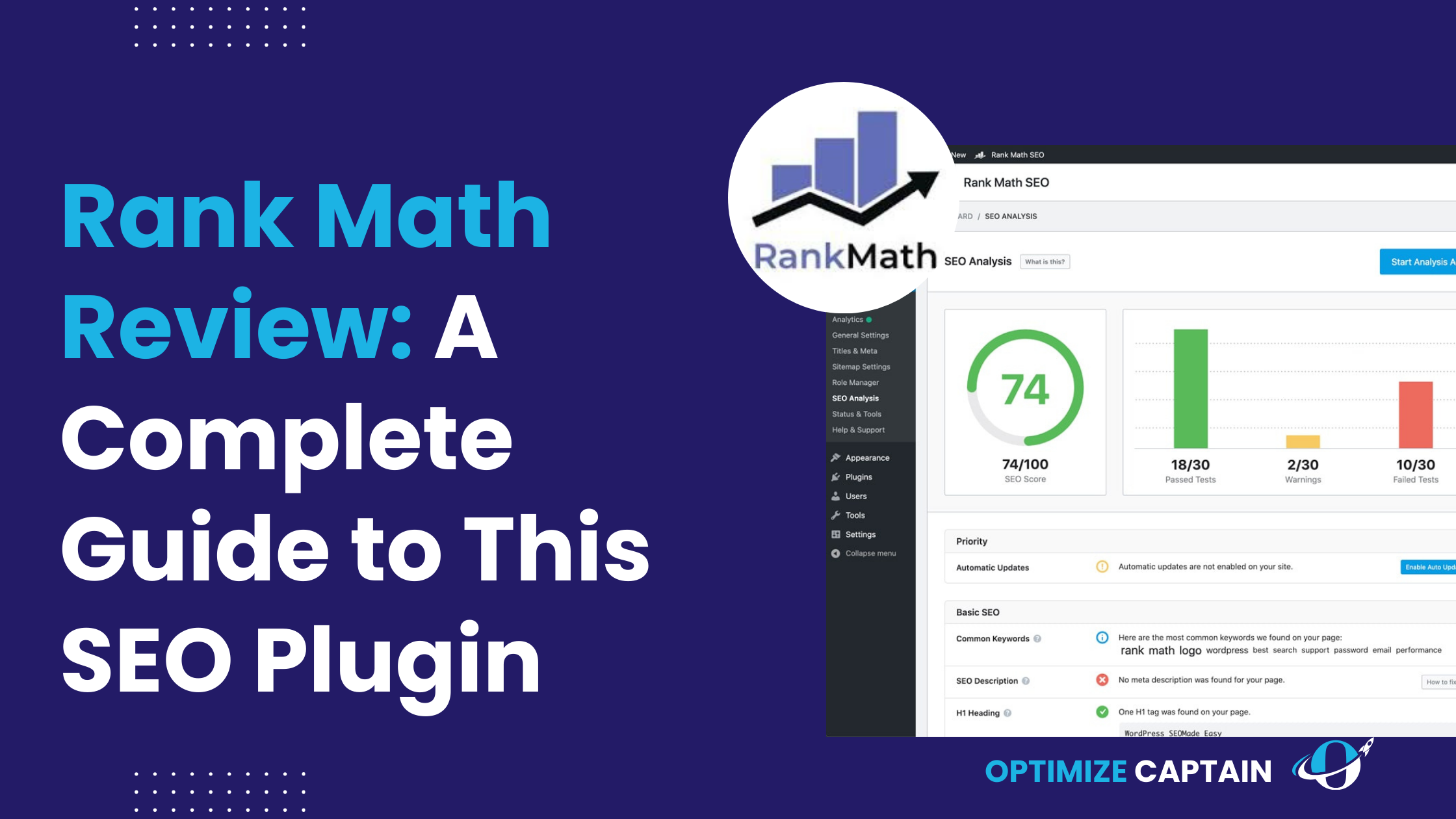Imagine a marketing manager searching for the best social media analytics tools for small businesses. They come across your SaaS platform at the top of the search results with a headline that perfectly addresses their needs. This demonstrates the power of a well-crafted SaaS SEO strategy in action.
In today’s digital world, where over 93% of online experiences start with a search engine, SaaS businesses must rank high for relevant keywords. This article will provide the knowledge and tools to develop a successful SaaS SEO strategy for your SaaS business in 2024. We will cover the essential components, walk you through the implementation process, and highlight the undeniable benefits of SEO for your SaaS company.
Why SEO Matters for SaaS Businesses?
Let’s face it, organic search engine traffic is a goldmine for SaaS companies. HubSpot reports that in 2023, an average of 14.6% of all conversions for SaaS businesses originated from organic search. That translates to a significant chunk of your potential customer base actively searching for solutions like yours online.
However, SEO goes beyond just driving traffic. It’s about establishing your brand as a thought leader, building trust with potential customers, and ultimately attracting high-quality leads that convert into paying subscribers. Unlike paid advertising, which stops when the budget runs dry, SEO delivers long-term, sustainable benefits that compound over time.
Understanding SaaS SEO: It’s More Than Just Using Keywords
While traditional SEO focuses heavily on keyword optimization, SaaS SEO requires a more nuanced approach. SaaS products are intangible by nature, making it crucial to demonstrate their value clearly through informative content. Additionally, the customer journey for SaaS products is longer and more complex, so the content needs to address different stages of the buying process. For example, someone looking for project management tools might start with broad searches like “improve team collaboration” and then move to more specific queries like “best online Gantt chart software for remote teams.” A good SaaS SEO strategy covers both broad and specific search queries throughout the customer journey.
Difference between Traditional SEO and SaaS SEO

Traditional SEO often prioritizes ranking for generic keywords with high search volume. While this approach can drive traffic, it might attract visitors who aren’t a good fit for your product or service, resulting in high bounce rates and low conversion. Traditional SEO content may also focus on a single conversion point, like a product purchase, neglecting the longer buyer journey for SaaS products.
In contrast, SaaS SEO takes a more targeted approach, considering the buyer journey and the specific needs of potential customers at every stage. By creating informative content that educates and addresses pain points throughout the funnel, SaaS SEO attracts qualified leads who are more likely to convert into paying customers. This multi-stage content strategy, combined with a focus on user intent and value demonstration, sets SaaS SEO apart from traditional SEO tactics. Here’s what further differentiates them:
Target Audience: Traditional SEO often casts a wide net, targeting a general audience with varying needs and interests. This can lead to attracting visitors who are not qualified leads for your SaaS product. SaaS SEO, on the other hand, focuses on a clearly defined buyer persona. By understanding the specific demographics, pain points, and goals of your ideal customer, you can create content that resonates with them and increases the likelihood of conversion.
Value Proposition: Traditional SEO primarily focuses on ranking for keywords and driving traffic to your website. While these elements are important, they don’t necessarily translate into paying customers. SaaS SEO, however, emphasizes demonstrating the value proposition of your SaaS product through informative content. This content educates potential customers about the benefits of your product and how it can solve their specific problems. By building trust and establishing your brand as a thought leader, SaaS SEO positions your product as the go-to solution for qualified leads.
Metrics: Traditional SEO primarily focuses on website traffic and keyword rankings. SaaS SEO, however, delves deeper, considering metrics like conversion rate, user engagement, and MRR (Monthly Recurring Revenue) from organic traffic. This holistic approach allows SaaS companies to measure the true impact of their SEO efforts on business growth.
Content Format: Traditional SEO content might be limited to blog posts and landing pages optimized for specific keywords. SaaS SEO, however, leverages a wider range of content formats like ebooks, webinars, case studies, and even user guides. This variety caters to different learning styles and preferences, nurturing leads throughout the buyer journey.
Building Your Bulletproof SaaS SEO Strategy: The Four Pillars
Now that we’ve established the importance of SEO for SaaS businesses let’s dive deeper into the four foundational pillars that will build your bulletproof SaaS SEO strategy for sustainable growth in 2024.
1. Keyword Research and Optimization
Imagine showing up at a conference for accountants when you offer marketing software. It’s a complete waste of time, right? The same principle applies to SEO. Keyword research ensures you’re attracting the right audience – potential customers actively searching for solutions your SaaS platform provides.
Here’s how to refine your keyword research for maximum impact:
- Go beyond search volume: While high-volume keywords seem attractive, prioritise those with high buyer intent. These keywords indicate users are closer to making a purchase decision. Tools like Ahrefs and Semrush allow you to analyze search intent, helping you target terms that convert.
- Think like your audience: Put yourself in your ideal customer’s shoes. What questions would they type into a search engine when looking for a solution like yours? Use more specific long-tail keywords and reflect user intent. For example, instead of targeting the generic term “project management software,” aim for keywords like “best online Gantt chart software for remote teams.”
- Stay informed about industry trends: Regularly revisit your keyword research to identify emerging trends and incorporate relevant keywords into your content strategy. Tools like Google Trends can help stay ahead of the curve.
- Understanding User Intent and Buyer Stage: Not all searches are created equal. Some users might be in the early research phase, just becoming aware of a problem they must solve. Others might be actively comparing different solutions. Tailor your content and keyword strategy to cater to different stages of the buyer’s journey. For example, target informational keywords for those in the research phase (“benefits of using project management software”) and target transactional keywords for users ready to buy (“comparison of top project management tools”).

2. Content Marketing and Creation
Content is king, especially in the case of SaaS SEO. High-quality, informative content does double duty: it attracts potential customers and establishes your brand as a trusted authority in your industry.
Here are some winning content creation strategies for SaaS companies:
- Become a valuable resource: Don’t just focus on selling your product. Create content that educates your audience, addresses their pain points, and offers practical solutions. This builds trust and positions your brand as a source of valuable insights.
- Content variety is key: A diverse content mix caters to different learning styles and stages of the buyer’s journey. Blog posts are great for addressing common challenges and introducing your product. Ebooks and white papers delve deeper into complex topics, showcasing your expertise. Case studies demonstrate the value proposition of your SaaS platform through real-world customer success stories.
- Optimize for readability and SEO: While informative content is crucial, ensure it’s easy to consume. Use clear and concise language, break up text with visuals, and structure your content with headings and bullet points for better readability. Don’t forget to strategically integrate relevant keywords throughout your content, but prioritise a natural reading experience.
3. Technical SEO and Site Performance
Technical SEO ensures your website is search engine friendly and delivers a seamless user experience. Think of it as the invisible foundation upon which your entire SEO strategy rests. A website that takes ages to load or isn’t mobile-friendly is a recipe for high bounce rates and lost conversions.
Here’s what technical SEO entails for SaaS businesses:
- Mobile Optimization is Non-Negotiable: According to Statista, over 63% of global web traffic in 2023 originated from mobile phones therefore a website that isn’t optimized for mobile devices is invisible to a significant portion of your target audience. Google prioritizes mobile-friendly websites in search results, so ensure your website offers a flawless user experience across all devices.
- Speed is King: Website loading speed is a crucial ranking factor. Run website speed tests and identify areas for improvement. This could involve optimizing image sizes, minimizing HTTP requests, and leveraging caching mechanisms. Every second of loading time can significantly impact user engagement and conversion rates.
- Clean Website Structure and Clear Navigation: Search engines must understand your website’s structure to crawl and index your content effectively. A clear and logical website architecture with user-friendly navigation makes it easier for search engines to understand your website and for visitors to find the information they need.
- Secure Your Website: Implement HTTPS encryption to ensure a secure connection for your website visitors. This builds trust with users and is a positive ranking factor in Google’s algorithm.
4. Link Building and Backlinks
Earning backlinks from high-authority websites in your niche acts as a vote of confidence for your brand in the eyes of search engines. Strong backlinks not only boost your website’s authority but also send valuable referral traffic your way.
Here are some effective strategies for building high-quality backlinks for your SaaS business, with a specific focus on what we can offer:
- Create Link-Worthy Content: The foundation of any successful link-building strategy is high-quality content that deserves to be linked to. Focus on creating informative, insightful, and engaging content that establishes you as a thought leader in your industry. This could include comprehensive blog posts, in-depth industry reports, or unique data-driven studies. The more valuable and shareable your content is, the more likely other websites will want to link to it as a trusted source.
- Guest Blogging on Relevant Websites: Partner with industry publications, blogs, and websites frequented by your target audience. Offer to write guest posts on relevant topics, incorporating backlinks to your website’s high-quality content. This strategy allows you to leverage the established audience of these websites and gain valuable backlinks in the process. When approaching potential guest blogging partners, prioritize websites with high domain authority and a strong focus on your industry.
- Harness the Power of Online Communities: Actively participate in online communities and forums where your target audience gathers. Share your expertise by answering questions, offering valuable insights, and engaging in relevant conversations. Don’t just promote your product; focus on providing genuine help and establishing yourself as a trusted resource within the community. Over time, you can strategically include links to your website’s helpful content when it adds value to the conversation.
- Broken Link Building: Identify broken links on websites within your niche. Contact the website owner and suggest your relevant content to replace the broken link. This is a win-win situation: you get a valuable backlink, and the website owner benefits from having a functioning link.
A Step-by-Step Guide for 2024 Success
- Set SMART Business Goals and KPIs (Key Performance Indicators)
Don’t just jump in blindly. Define your goals clearly, whether it’s increasing brand awareness, driving organic traffic, boosting qualified leads, or improving conversion rates. Make sure your goals are Specific, Measurable, Achievable, Relevant, and Time-bound (SMART). Once you have your goals in place, establish measurable metrics to track your progress. This will help you identify what’s working and what needs improvement as you refine your SEO strategy.

- Conduct a Competitive Analysis
Understanding your main competitors is crucial. Who are they? What keywords do they rank for? What type of content do they create? By analyzing your competitors’ strengths and weaknesses, you can identify opportunities to differentiate your content strategy and potentially target niche areas they might be overlooking.
- Optimize On-page SEO
Ensure your website is optimized for your target keywords. This includes:
- Page Titles and Meta Descriptions: Craft compelling titles and descriptions that accurately reflect your content and entice users to click.
- Header Tags: Structure your content using clear and concise H1, H2, and H3 tags to improve readability and search engine understanding.
- Image Alt Text: Optimize image alt text with relevant keywords to improve image search visibility.
- Internal Linking: Strategically link to other relevant pages on your website to improve user experience and distribute link equity.
- Develop a Compelling Content Strategy
This is where you truly shine as a thought leader. Move beyond basic product descriptions and create in-depth, informative content that educates, engages, converts your audience, and addresses their specific needs throughout the buyer’s journey. Here’s how to approach it:
Understand Your Audience:
The foundation of any successful content strategy lies in understanding your ideal customer. Develop buyer personas that identify your audience’s demographics, pain points, goals, and preferred content formats (e.g., blog posts, videos).
Craft Your Content Mix:
With your audience in mind, curate a diverse content mix tailored to the different stages of the buyer journey:
- Informational Content (Top of the Funnel):
- Blog posts: Regularly publish informative blog posts targeting relevant keywords and addressing your audience’s questions at the beginning of their buying journey (e.g., “Challenges of remote team management”).
- Ebooks and white papers: Offer downloadable resources like ebooks and white papers that delve deeper into industry trends, challenges, and solutions your product provides (e.g., “The Ultimate Guide to Improving Team Communication”).
- Infographics and videos: Utilize visually appealing infographics and short explainer videos to break down complex topics and engage your audience.
- Consideration Content (Middle of the Funnel):
- Case studies: Showcase real-world customer success stories to demonstrate the value proposition of your SaaS platform. Highlight how your product helped customers achieve specific goals and overcome challenges (e.g., “How [Company Name] Increased Efficiency by 20% with [Your SaaS Product]”).
- Webinars and online events: Host interactive webinars or online events featuring industry experts to establish your brand as a knowledge hub and discuss topics relevant to the middle stages of the buyer journey (e.g., “Boost Productivity with Effective Project Management”).
- Transactional Content (Bottom of the Funnel):
- Product comparisons and reviews: Create informative content comparing your product to competitors, highlighting its unique features and benefits.
- Free trials and demos: Offer free trials and product demos to allow potential customers to experience your SaaS platform firsthand and understand its value.
- Customer success stories: Share ongoing success stories from existing customers to showcase the long-term benefits of using your product.

Keep in mind:
- Content can sometimes overlap categories. For instance, a blog post comparing different project management tools could be considered both informational (educating viewers) and commercial (promoting specific products).
- The primary purpose of the content should determine its category.
- Some content formats, like landing pages, primarily serve a navigational purpose (guiding users towards a specific action).
By understanding these content categories and how they align with different formats, you can develop a strategic content plan that targets users at various stages of their buying journey.
- Monitor and Adjust Your Strategy
SEO is not a one-time fix; it’s an ongoing process that requires continuous monitoring and adaptation. Regularly track your website traffic, keyword rankings, conversion rates, and other relevant metrics using analytics tools like Google Search Console. Analyze the data to identify what’s working and what needs improvement. Stay updated on the latest SEO trends and algorithm changes to ensure your strategy remains effective.
The Benefits of a Strong SaaS SEO Strategy
Investing in a well-rounded SaaS SEO strategy delivers a multitude of benefits for your business:
- Increased Visibility and Brand Awareness: When your website ranks high for relevant keywords, you become more visible to potential customers organically, putting your brand at the forefront of their minds.
- Cost-Effectiveness: SEO is a cost-effective way to generate leads compared to paid advertising, as the benefits compound over time. The organic traffic you acquire keeps growing and converting as your ranking improves.
- Authority Building and Credibility: High search engine rankings and valuable content establish your brand as a thought leader and a trusted source in your industry. This credibility goes a long way in building trust with potential customers and fostering long-term relationships.
- Sustainable Growth and Competitive Advantage: A strong SEO strategy delivers long-term, sustainable growth, giving you a significant edge over competitors who rely solely on paid advertising. By consistently providing valuable content and optimizing your website, you position yourself as a go-to resource in your niche, attracting high-quality leads and driving organic conversions.
Bonus Tips for SaaS SEO Success in 2024
Here are some additional tips to stay ahead of the curve and maximize your SaaS SEO success in 2024:
- Embrace User Experience (UX): Google prioritizes websites that offer a positive user experience. Ensure your website is mobile-friendly, easy to navigate, and visually appealing. Focus on creating a seamless user journey from landing page to conversion.
- Optimize for Voice Search: With the rise of voice assistants like Siri and Alexa, voice search is becoming increasingly popular. Optimize your content with natural language queries in mind, including long-tail keywords and conversational phrases.
- Leverage Video Marketing: Videos are a powerful tool for engaging your audience and explaining complex topics. Create high-quality video content that aligns with your content strategy and consider video SEO best practices for improved search visibility.
- Build a Strong Social Media Presence: Social media platforms are a great way to promote your content, engage with your target audience, and build brand awareness. Share your blog posts, infographics, and valuable content on relevant social media channels.
- Focus on Local SEO (if applicable): If your SaaS solution caters to local businesses, incorporate local SEO strategies. Optimize your Google My Business listing, build citations in local directories, and target location-specific keywords to attract customers in your area.
- Stay Updated on Google Algorithm Changes: Google’s search algorithm constantly evolves. Stay informed about the latest updates and adjust your SEO strategy to ensure continued relevance and ranking success.
By implementing these additional tips alongside the core SEO strategies outlined earlier, you can create a comprehensive and future-proof SEO strategy for your SaaS business. Remember, the key to success lies in providing exceptional value to your target audience, establishing yourself as a trusted authority, and continuously adapting your approach to stay ahead of the curve in the ever-changing digital world.
Conclusion
In conclusion, SEO is not just a tactic; it’s a strategic investment for any SaaS business seeking sustainable growth in today’s competitive world. Following the steps outlined above and continuously refining your approach, you can establish a dominant online presence, attract qualified leads, and convert them into loyal customers for your SaaS offering. Remember, SEO is a marathon, not a sprint. Be patient, stay focused on delivering value, and watch your SaaS business flourish through the power of organic search.





